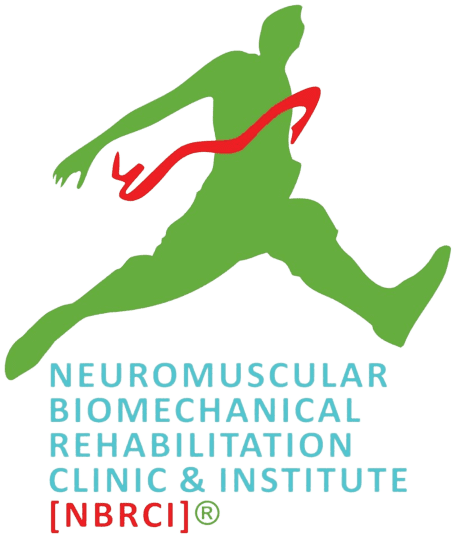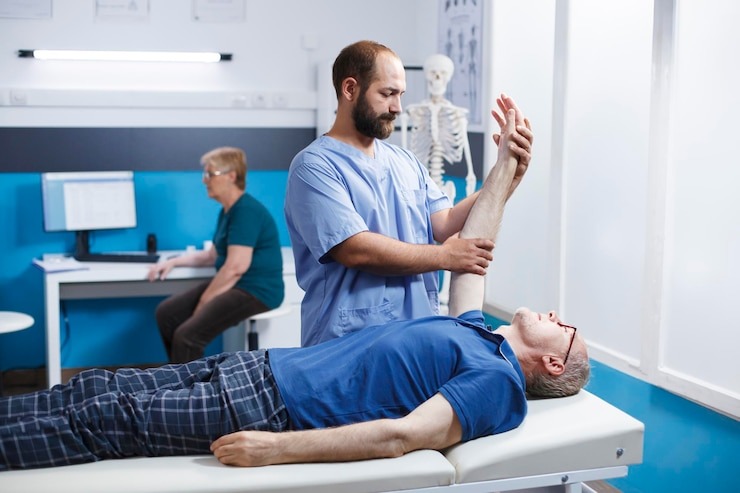Understanding PFPS: Causes, Symptoms, and Effective Treatment
Patellofemoral Pain Syndrome (PFPS), also known as “runner’s knee,” is a common knee condition that affects people of all ages, particularly athletes and physically active individuals. At NBR Clinic, under the expert guidance of Dr. Riaz Ahmed, we offer advanced physiotherapy solutions tailored to the needs of patients suffering from PFPS. If you are experiencing chronic knee pain that worsens during activity, you might be dealing with Patellofemoral Pain Syndrome (PFPS). Let’s explore the causes, symptoms, treatment options, and the importance of early intervention.
Causes of PFPS
PFPS occurs when the kneecap (patella) does not move properly within the groove of the thigh bone (femur), leading to irritation of the soft tissues and cartilage beneath the kneecap. There are several contributing factors to this misalignment:
Overuse or Repetitive Stress
Athletes, runners, and individuals involved in high-impact sports are more prone to PFPS due to the repetitive movement of the knee joint. Sudden increases in training intensity or duration without adequate rest can overload the joint.
Muscle Imbalance
Weakness in the hip, thigh, or core muscles can disrupt the alignment of the kneecap. For instance, underactive quadriceps or tight hamstrings and calves can increase pressure on the patellofemoral joint.
Improper Foot Mechanics
Flat feet, overpronation, or improper footwear can affect how forces are transmitted through the leg, placing extra stress on the knee joint.
Previous Injuries
A history of knee trauma or surgery can alter joint biomechanics and increase susceptibility to PFPS.
At NBR Clinic, Dr. Riaz Ahmed performs a detailed biomechanical assessment to identify the root cause of PFPS in each individual, ensuring a targeted physiotherapy plan.
Symptoms of PFPS
Recognizing the symptoms of Patellofemoral Pain Syndrome (PFPS) early can significantly improve the chances of a quicker and more effective recovery. The most prominent sign of PFPS is anterior knee pain, which is felt at the front of the knee or around the kneecap. This pain often worsens with activities that place stress on the knee joint. Many patients report discomfort while sitting for extended periods—a symptom often referred to as the “theater sign.”
Others may experience pain when using stairs, especially when going down, as well as during squatting, running, or jumping. Some individuals also notice grinding or clicking sounds when bending or straightening the knee, which can be accompanied by swelling or tenderness around the kneecap. If you are experiencing any of these symptoms, it is important to consult with Dr. Riaz Ahmed at NBR Clinic for a thorough evaluation and personalized treatment plan tailored to your condition.
PFPS Treatment at NBR Clinic
At NBR Clinic, we specialize in non-invasive and effective physiotherapy treatments for PFPS. Under the expert care of Dr. Riaz Ahmed, our approach focuses on pain relief, restoring function, and preventing recurrence.
1. Comprehensive Physiotherapy Assessment
Our treatment journey starts with a full biomechanical and movement analysis. This helps us identify specific muscle weaknesses, joint restrictions, or movement patterns that may be contributing to the issue.
2. Manual Therapy
Dr. Riaz Ahmed and our physiotherapy team use manual therapy techniques such as joint mobilization, soft tissue release, and patellar tracking correction to improve joint function and reduce pain.
3. Customized Exercise Programs
Strengthening exercises play a critical role in PFPS treatment. Our physiotherapists design individualized exercise programs focusing on:
- Strengthening the quadriceps and gluteal muscles
- Stretching tight muscles like the hamstrings and iliotibial band (IT band)
- Core stabilization exercises
- Functional movement retraining
4. Taping and Bracing
Kinesiology taping or patellar braces may be used to support proper kneecap alignment during activities. This can help reduce pain and prevent further irritation.
5. Gait and Footwear Assessment
We analyze walking and running patterns and recommend appropriate footwear or orthotics to ensure proper lower limb biomechanics.
6. Patient Education
We believe informed patients recover faster. At NBR Clinic, you’ll learn about PFPS, the importance of adherence to the treatment plan, and how to avoid triggers that may aggravate your condition.
Whether you’re a professional athlete or someone who enjoys daily walks, our physiotherapy treatments for PFPS are designed to help you return to your routine without pain or restriction.
Why Early Treatment Matters
Ignoring early signs of PFPS can lead to chronic pain, cartilage damage under the kneecap (chondromalacia patella), and altered movement patterns that may cause pain in the hips, ankles, or lower back. Early physiotherapy at NBR Clinic, led by Dr. Riaz Ahmed, helps prevent long-term joint damage and ensures a faster, more effective recovery through a personalized, proactive approach.
Why Choose NBR Clinic for PFPS Treatment?
With a patient-first philosophy and a strong commitment to evidence-based care, NBR Clinic is a trusted destination for effective PFPS treatment. Patients choose us because of the expert care provided by Dr. Riaz Ahmed, a leading physiotherapist specializing in knee rehabilitation. Our clinic is equipped with state-of-the-art technology and modern techniques to ensure the highest quality of treatment. We design personalized care plans tailored to each individual’s unique needs, all within a comfortable and welcoming environment suitable for all age groups. At NBR Clinic, we focus not only on immediate relief but also on long-term recovery and injury prevention. Our goal is to restore your mobility, strength, and confidence—so you can return to doing what you love, pain-free. Feel free to consult and take the first step toward getting well soon! Find expert care and updates—visit NBR clinic !
To Book Appointment or get consultation you can contact on Facebook or Instagram








